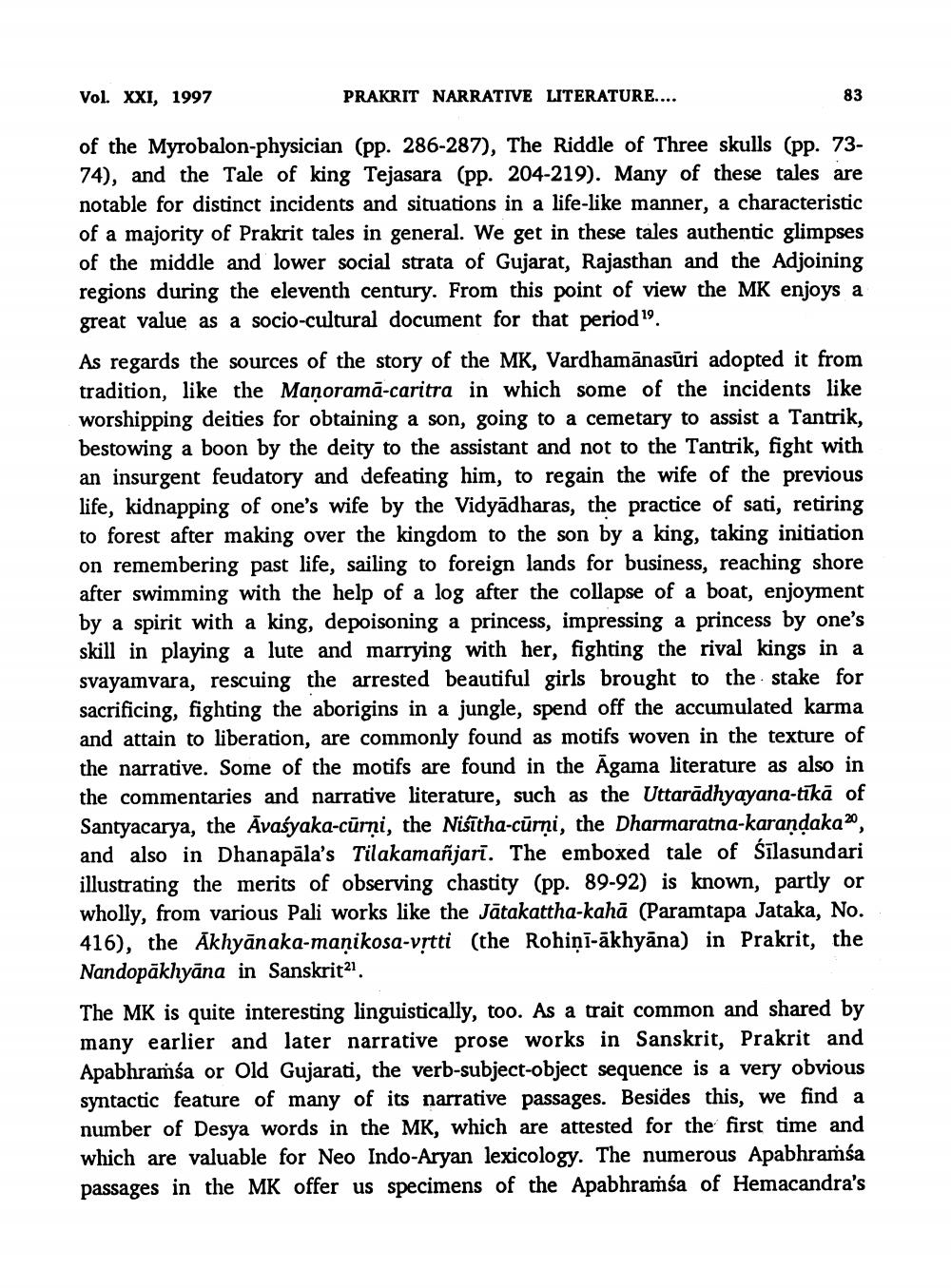________________
Vol. XXI, 1997
PRAKRIT NARRATIVE LITERATURE....
of the Myrobalon-physician (pp. 286-287), The Riddle of Three skulls (pp. 7374), and the Tale of king Tejasara (pp. 204-219). Many of these tales are notable for distinct incidents and situations in a life-like manner, a characteristi of a majority of Prakrit tales in general. We get in these tales authentic glimpses of the middle and lower social strata of Gujarat, Rajasthan and the Adjoining regions during the eleventh century. From this point of view the MK enjoys a great value as a socio-cultural document for that period 19.
As regards the sources of the story of the MK, Vardhamānasūri adopted it from tradition, like the Manoramā-caritra in which some of the incidents like worshipping deities for obtaining a son, going to a cemetary to assist a Tantrik, bestowing a boon by the deity to the assistant and not to the Tantrik, fight with an insurgent feudatory and defeating him, to regain the wife of the previous life, kidnapping of one's wife by the Vidyādharas, the practice of sati, retiring to forest after making over the kingdom to the son by a king, taking initiation on remembering past life, sailing to foreign lands for business, reaching shore after swimming with the help of a log after the collapse of a boat, enjoyment by a spirit with a king, depoisoning a princess, impressing a princess by one's skill in playing a lute and marrying with her, fighting the rival kings in a svayamvara, rescuing the arrested beautiful girls brought to the stake for sacrificing, fighting the aborigins in a jungle, spend off the accumulated karma and attain to liberation, are commonly found as motifs woven in the texture of the narrative. Some of the motifs are found in the Agama literature as also in the commentaries and narrative literature, such as the Uttarādhyayana-tīkā of Santyacarya, the Āvaśyaka-cūrni, the Nisītha-cūrni, the Dharmaratna-karandaka 20, and also in Dhanapāla's Tilakamañjari. The emboxed tale of Silasundari illustrating the merits of observing chastity (pp. 89-92) is known, partly or wholly, from various Pali works like the Jātakattha-kahā (Paramtapa Jataka, No. 416), the Akhyānaka-manikosa-vrtti (the Rohini-ākhyāna) in Prakrit, the Nandopākhyāna in Sanskrit21 The MK is quite interesting linguistically, too. As a trait common and shared by many earlier and later narrative prose works in Sanskrit, Prakrit and Apabhramba or Old Gujarati, the verb-subject-object sequence is a very obvious syntactic feature of many of its narrative passages. Besides this, we find a number of Desya words in the MK, which are attested for the first time and which are valuable for Neo Indo-Aryan lexicology. The numerous Apabhramsa passages in the MK offer us specimens of the Apabhramba of Hemacandra's




